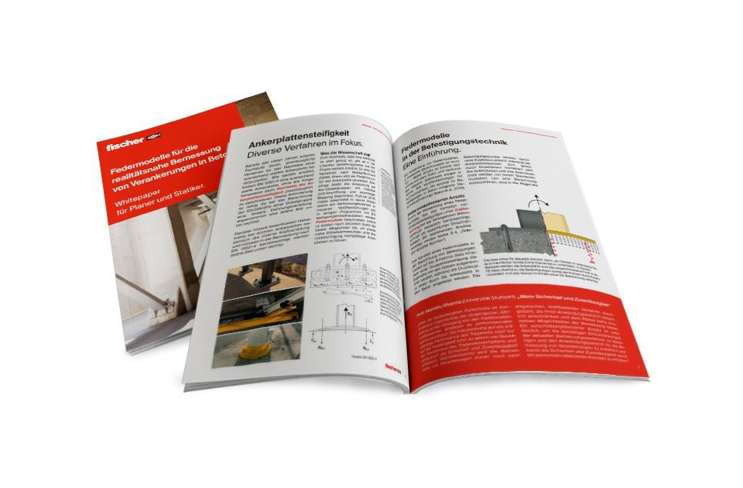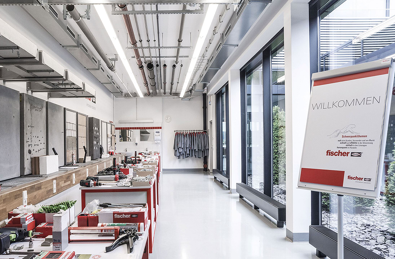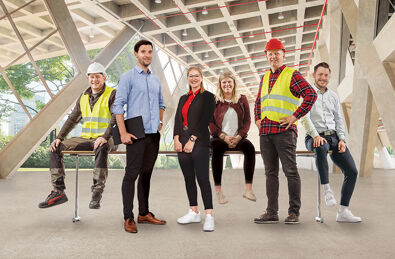Current standards and guidelines such as EN 1992-4 and ACI 318 have their limitations when it comes to designing fastenings in concrete. Spring models provide a solution, as they also consider displacements and deformations of an anchorage in addition to transferable forces. At the same time, they let you design more than just rectangular groups of anchors with a maximum 3x3 anchor configuration.
fischer’s whitepaper provides all the answers to key questions on the spring model design approach:
By filling in our form you can download this white paper free of charge. Complete the form and benefit from expert knowledge.

Bridge constructions, enormous plant and office structures or in football stadiums – anchorages in concrete provide safety and stability to all types of supporting structures around the globe.
That’s part of the reason why experts have been working to develop practical methods to verify sufficient base plate stiffness for many years. Spring models not only allow deformations and stresses within the base plate to be calculated under the influence of force. They also allow the anchor forces of individual fastenings within an anchor group to be determined. The behaviour of the entire fastening system can be represented based on these findings and results. Dr. Thilo Pregartner from the fixing specialist fischer emphasises that “in principle, the spring model method can be used for the realistic assessment of the stiffness of base plates as well as to assess the load distribution and potential load transfer between fastenings”.

Verification is required to prove that a selected product is suitable for the required load in order to prevent an anchor from failing. This makes convenient design software essential for planners and structural engineers.
fischer’s free FiXperience design software comprises engineering software in addition to seven specialist application modules. The C-Fix module is the right choice for the design of steel and bonded anchors in concrete.
FiXperience undergoes continuous development to meet the design standards and requirements of planners and structural engineers. The new EN 1992-4 standard has already been fully integrated into C-Fix-Online. Finite element modules have also been integrated into the latest version and allow the rigidness of the base plate to be examined with the help of a linear spring model. The rigidness of the anchor plate can then be optimised by adding reinforcements, for instance. Non-linear spring models will be available in future.
The spring model module is available exclusively in the online version.



We have been offering targeted seminars for professionals in the construction industry for over 30 years. All state-of-the-art training sessions provide information on current national and European standards and guidelines as well as statutory provisions and their implementation during planning and processing.
And the best part: You alone decide whether the training takes place at our Academy, through OnlineSeminare or at your company.

Our Technical Advice Experts are available through all channels from Monday to Friday, by telephone, email and chat. Planners and structural engineers can receive competent support on issues such as static calculations or preliminary designs.
Contact us:
Email: intsupport@fischer.de